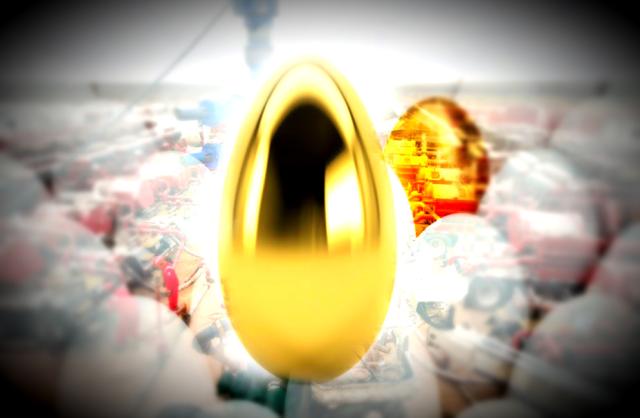
The reward for the oilfield service sector to date? Nonparticipation in the financial gains that have accrued to their customers, writes Richard Mason, chief technical director, in his monthly column for Oil and Gas Investor. (Source: Hart Energy/Shutterstock.com)
[Editor's note: A version of this story appears in the September 2019 edition of Oil and Gas Investor. Subscribe to the magazine here.]
Imagine a business where you could improve customer efficiency every quarter, produce demonstrable evidence of performance gains for the customer despite economic headwinds and enable customers to transition from capital outspend as far as the eye can see to a sustainable business that self-funds development—the standard capitalist business model.
Now imagine seeing demand for your services decrease—along with pricing. What kind of economic theory is that? Whatever you name the phenomenon, it is now the status quo for oilfield services, which have been instrumental in improving capital efficiency for E&Ps, winnowing down finding and operational costs, and reducing discreet costs for services that account for more than half the savings gains E&Ps have experienced in wellbore construction.
Engineers can draw up any plan in an E&P reservoir stimulation department. But wealth is not created in oil and gas until the crews on the drilling rigs and pressure pumping units show up at the well site to make it happen in the field.
The reward for the oilfield service sector to date? Nonparticipation in the financial gains that have accrued to their customers. In a sense, the E&P sector today is living off the depreciation for pressure pumping equipment and for land drilling rigs.
The current sector in the crosshairs for this unbalanced economic partnership is that of the well stimulation firms, judging by second-quarter 2019 earnings calls. This, of course, is not a first-time event in oil and gas. Consider the stunning decline in drilling days where more than a month has been shaved out of the equation in every shale basin during the past four years, even as laterals have increased in length. Those gains are still accruing in the mid-single digits percentage-wise across the oil patch.
So special kudos to the land drillers and their rigs with omni-directional walking systems, directional drilling improvements, work process automation and exceptional safety performance. It now requires less than half the rigs necessary back in 2014 to generate more oil and gas in the U.S. The equipment and the crews who operate it have kept E&Ps economically relevant during the commodity price collapse in the shale era.
The payout for drillers? Flat rig rates for super-spec drilling rigs—now below the 2014 peak for lesser technology rigs—and softening demand for drilling services. The horizontal rig count has declined year-to-date and is on track to drop 10% in 2019. Rare indeed is the E&P sector today, particularly in the publicly held sector, that is not releasing rigs in the second half of 2019.
Now the demand decline for services is spreading to the well stimulation sector with multiple E&Ps reducing frack crews, particularly in Appalachia and the Midcontinent, while promising double-digit production volume increases in a world dangerously close to systemic oversupply in oil, gas and NGL output. Think about this: military hostilities in the Strait of Hormuz, the collapse in Venezuelan oil production and routine disruption in Libya’s rebel-torn oil sector. All of this is underway, and oil prices are declining.
The deteriorating economic environment for well stimulation firms is evolving despite an increase in stages completed per day and the ensuing increase in hours spent pumping per stage. Well completion cadence set new records in June, reaching 50 wells daily. Credit the bundling of wellsite services such as wireline and well stimulation, the cost-reducing move to dual fuel prime movers, and improvements in perforating technology.
The pressure pumpers have done yeoman’s work in working themselves out of a job. Pressure pumpers are slowly stacking equipment and letting crews go as retained earnings per fleet fall. Frankly, stimulation providers find that it makes better economic sense to stack equipment than to allocate the $2- to $5 million annually in maintenance capex.
Meanwhile, investment in new technology, such as electric frack fleets, remains sporadic.
The performance improvements provided by the oilfield service sector are responsible for more than half of the well construction cost reductions that E&Ps identify on their desperate open-field run toward sustainable free cash flow.
Finding some way for oil services to participate equitably in performance improvements, even in a sere budgetary environment, will avoid the old idiom about killing the goose that lays the golden egg.
Recommended Reading
TPG Adds Lebovitz as Head of Infrastructure for Climate Investing Platform
2024-02-07 - TPG Rise Climate was launched in 2021 to make investments across asset classes in climate solutions globally.
Air Products Sees $15B Hydrogen, Energy Transition Project Backlog
2024-02-07 - Pennsylvania-headquartered Air Products has eight hydrogen projects underway and is targeting an IRR of more than 10%.
NGL Growth Leads Enterprise Product Partners to Strong Fourth Quarter
2024-02-02 - Enterprise Product Partners executives are still waiting to receive final federal approval to go ahead with the company’s Sea Port Terminal Project.
Sherrill to Lead HEP’s Low Carbon Solutions Division
2024-02-06 - Richard Sherill will serve as president of Howard Energy Partners’ low carbon solutions division, while also serving on Talos Energy’s board.
Magnolia Appoints David Khani to Board
2024-02-08 - David Khani’s appointment to Magnolia Oil & Gas’ board as an independent director brings the board’s size to eight members.





